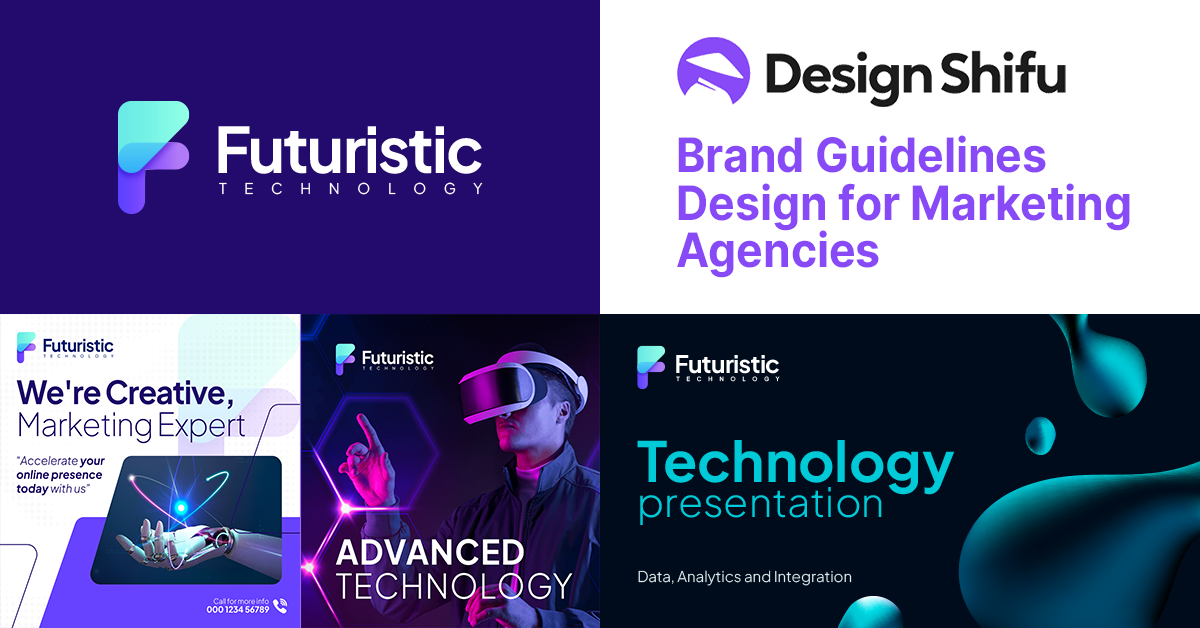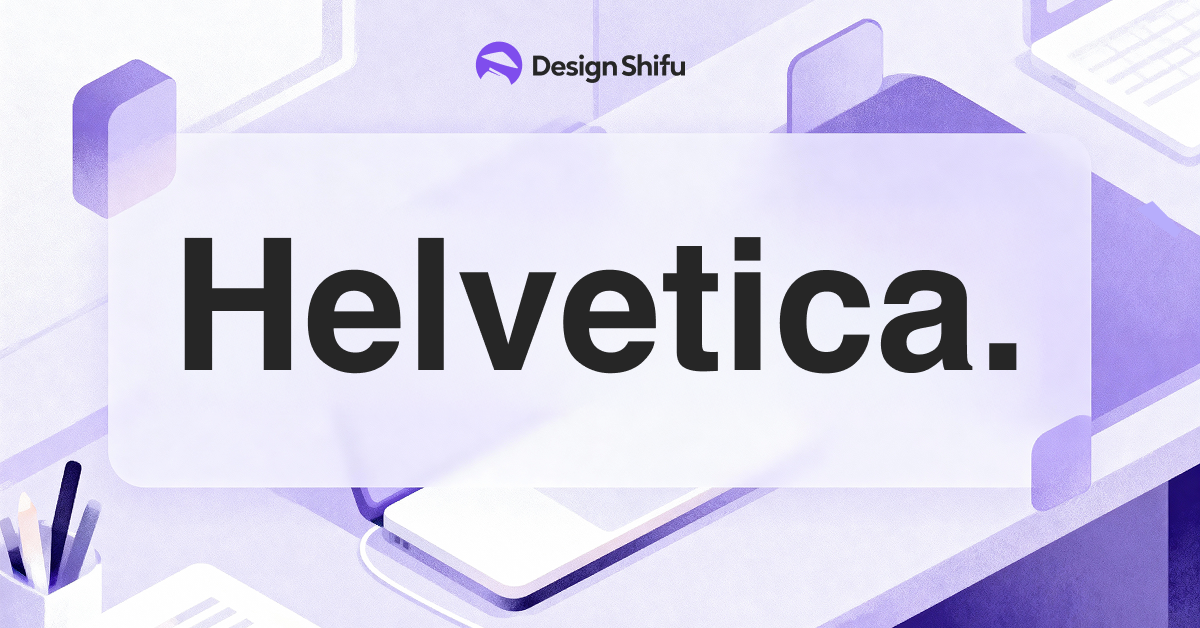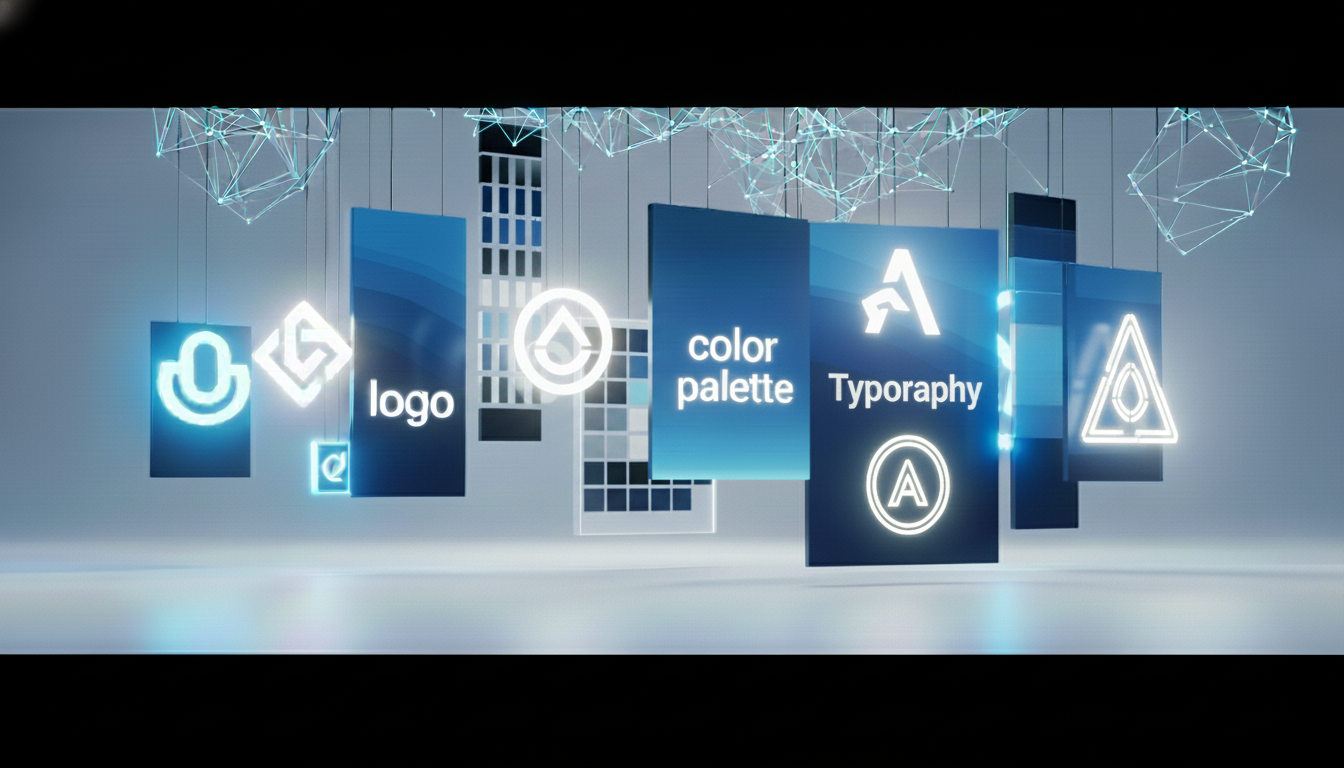Marketing agencies face a unique challenge: creating cohesive brand experiences across multiple clients while maintaining each brand’s distinct identity. The secret weapon? Professionally designed brand guidelines that serve as the definitive playbook for consistent brand expression.
Whether you’re designing guidelines for clients or establishing standards for your own agency, comprehensive brand guidelines transform scattered brand elements into a unified, professional system that drives recognition, trust, and business results.
TL;DR
- Marketing agencies juggle multiple brands, making consistency a challenge. Professional brand guidelines solve this by offering a clear, strategic framework for visuals, tone, and messaging across all client touchpoints.
- This guide walks you through what to include from brand story to digital and print applications, plus tools, processes, and key metrics to ensure your guidelines deliver real ROI.
- Whether you’re designing for clients or your own agency, solid guidelines are a growth asset, not just a style sheet.
What Are Brand Guidelines and Why They Matter
Brand guidelines are comprehensive documents that define how a brand should be presented across all touchpoints. They serve as the authoritative reference for anyone creating content, designs, or communications for the brand.
For marketing agencies, brand guidelines solve critical challenges
- Consistency Across Teams: When multiple designers, copywriters, and marketers work on client accounts, guidelines ensure everyone creates on-brand content regardless of individual interpretation.
- Client Confidence: Professional brand guidelines demonstrate your agency’s strategic thinking and attention to detail, justifying premium pricing and building long-term relationships.
- Efficiency at Scale: Clear standards eliminate guesswork, reduce revision cycles, and accelerate project delivery across all client touchpoints.
- Brand Protection: Guidelines prevent brand dilution by establishing clear dos and don’ts for brand usage, protecting your clients’ investments in brand development.
The Anatomy of Effective Brand Guidelines
Professional brand guidelines for marketing agencies should include these essential components
1. Brand Story and Positioning
Start with the foundation—why the brand exists and what makes it unique. This section should include:
- Mission Statement: The brand’s core purpose and reason for being
- Vision Statement: Where the brand aspires to be in the future
- Brand Values: The principles that guide brand behavior and decision-making
- Brand Personality: The human characteristics that define the brand’s voice and tone
- Target Audience: Detailed personas of who the brand serves
This foundational content informs every design and communication decision, ensuring alignment between strategy and execution.
2. Visual Identity System
The visual identity section forms the heart of your brand guidelines, covering
- Logo Standards: Primary logo, variations, minimum sizes, clear space requirements, and usage contexts. Include examples of correct and incorrect usage with clear explanations.
- Color Palette: Primary brand colors with exact specifications (Hex, RGB, CMYK, Pantone). Include secondary colors and specify usage hierarchy. For example: Primary Blue (#2B4C8C) for headlines, Secondary Gray (#F5F5F5) for backgrounds.
- Typography Hierarchy: Primary and secondary font families with specific usage guidelines for headlines, body text, and supporting elements. Specify font weights, sizes, and line spacing for different applications.
- Iconography Style: If the brand uses custom icons, establish style guidelines for weight, corner radius, and visual treatment to maintain consistency across all applications.
- Photography Guidelines: Style parameters for brand photography including composition, lighting, color treatment, and subject matter that aligns with brand personality.
3. Voice and Tone Standards
Many agencies overlook this crucial section, but voice and tone guidelines ensure written communications match visual consistency
- Brand Voice: The consistent personality traits that characterize all brand communications
- Tone Variations: How the voice adapts for different contexts (social media vs. formal proposals)
- Messaging Hierarchy: Key messages, taglines, and value propositions
- Writing Style: Grammar preferences, terminology usage, and communication approach
4. Application Guidelines
Show how brand elements work together across real-world applications
- Digital Applications: Website headers, social media templates, email signatures, and digital advertising formats
- Print Materials: Business cards, letterheads, brochures, and packaging designs
- Environmental Graphics: Signage, trade show displays, and office branding
- Merchandise: Branded apparel, promotional items, and corporate gifts
Each application should include specifications, measurements, and examples of proper implementation.
The Design Process: Creating Guidelines That Work
Phase 1: Strategic Foundation
Before designing anything, establish the strategic foundation through client collaboration
- Brand Discovery Workshop: Facilitate sessions to uncover brand values, personality, and positioning. Use exercises like brand archetype mapping and competitive analysis to build understanding.
- Stakeholder Interviews: Speak with key personnel to understand internal brand perceptions and alignment. Include leadership, sales, marketing, and customer service perspectives.
- Audit Existing Materials: Review current brand applications to identify inconsistencies, opportunities, and assets worth preserving.
- Define Success Metrics: Establish how you’ll measure guideline effectiveness—brand recognition, consistency scores, or implementation adoption rates.
Phase 2: Visual System Development
With strategy established, develop the visual identity system
- Logo Exploration: Create multiple logo concepts that reflect brand strategy. Test concepts across various applications to ensure versatility and scalability.
- Color Psychology Application: Select colors that reinforce brand personality and resonate with target audiences. Consider cultural implications and accessibility requirements.
- Typography Pairing: Choose font combinations that enhance readability while expressing brand character. Ensure fonts work across print and digital applications.
- Supporting Elements: Develop patterns, textures, or graphic elements that add visual interest while supporting the primary identity system.
Phase 3: Documentation and Testing
Transform design decisions into comprehensive guidelines
- Content Organization: Structure information logically with clear navigation. Use visual examples alongside written explanations for maximum clarity.
- Usage Examples: Show correct and incorrect applications with explanatory notes. Include edge cases and special circumstances that teams might encounter.
- Technical Specifications: Provide exact measurements, file formats, and production requirements for different applications.
- Implementation Testing: Share draft guidelines with internal teams and client stakeholders to identify gaps or unclear instructions before finalizing.
Digital vs. Print: Tailoring Guidelines for Different Mediums
Modern brand guidelines must address both digital and print applications, each with unique requirements
Digital-First Considerations
- Responsive Design: Ensure logos and visual elements work across device sizes, from mobile screens to desktop displays.
- Screen Color Accuracy: RGB color specifications for digital applications, with guidance on how colors may appear differently across devices.
- Accessibility Standards: Color contrast ratios, font size minimums, and alternative text requirements for inclusive design.
- Animation Guidelines: If the brand uses motion graphics, establish parameters for timing, easing, and style consistency.
- File Format Specifications: Provide assets in multiple formats (SVG, PNG, WebP) optimized for different digital use cases.
Print Production Standards
- Color Management: CMYK color builds and Pantone specifications for consistent print reproduction across different vendors and materials.
- Paper and Material Guidelines: Recommendations for paper types, finishes, and specialty materials that enhance brand presentation.
- Production Tolerances: Guidelines for bleed, trim, and safety margins to ensure professional print results.
- Quality Control Standards: Specifications for print quality, including dot gain, registration, and color matching requirements.
Common Mistakes Marketing Agencies Make
Avoid these pitfalls when creating brand guidelines
Over-Complexity
Many agencies create guidelines so detailed they become overwhelming. Focus on practical, actionable guidance rather than exhaustive documentation. Include only information that directly impacts brand consistency.
Under-Documentation
Conversely, leaving too much open to interpretation creates inconsistency. Document decisions thoroughly, especially for elements like color usage hierarchy and typography sizing.
Static Thinking
Brand guidelines aren’t set-in-stone documents. Build in flexibility for growth and evolution while maintaining core brand integrity. Include processes for requesting modifications or additions.
Technical Oversights
Failing to address practical implementation challenges leads to guideline abandonment. Consider real-world constraints like budget limitations, timeline pressures, and skill level variations among users.
Lack of Training
Even perfect guidelines fail without proper training. Plan rollout sessions, create quick-reference guides, and establish channels for ongoing support and clarification.
Tools and Software for Creating Professional Guidelines
Choose tools that match your team’s skills and client needs
Design-Focused Solutions
- Adobe InDesign: Industry standard for print-quality guideline documents with sophisticated typography and layout controls.
- Figma: Excellent for collaborative design work with built-in commenting and version control. Ideal for digital-first guidelines.
- Sketch: Popular among digital designers with strong symbol and style libraries for maintaining consistency across guideline pages.
Specialized Brand Management Platforms
- Frontify: Purpose-built for brand guidelines with interactive features, asset management, and usage tracking capabilities.
- Brandfolder: Combines guideline hosting with digital asset management, making it easy for teams to access both guidelines and brand assets.
- Canva Brand Kit: Simplified solution for smaller clients who need basic brand management without complex features.
Content Management Considerations
- Version Control: Implement systems to track guideline updates and ensure teams use current versions.
- Access Management: Control who can view, edit, or distribute guidelines, especially for sensitive or competitive information.
- Distribution Methods: Plan how guidelines will be shared, PDF downloads, online portals, or printed manuals based on client preferences and security requirements.
Measuring Success: KPIs for Brand Guidelines
Track these metrics to demonstrate guideline effectiveness
Consistency Metrics
- Brand Recognition Scores: Measure how consistently the brand appears across touchpoints through regular audits.
- Implementation Compliance: Track adherence to guidelines across different teams and applications.
- Error Reduction: Monitor decreases in brand application mistakes and revision requests.
Efficiency Indicators
- Project Timeline Reduction: Measure faster project completion due to clearer brand direction.
- Revision Cycles: Track reductions in design revisions and approval cycles.
- Onboarding Speed: Monitor how quickly new team members can produce on-brand work.
Business Impact
- Brand Equity Growth: Assess improvements in brand recognition, recall, and perception.
- Client Satisfaction: Measure client satisfaction with brand consistency and professional presentation.
- Revenue Impact: Track connections between strong brand guidelines and client retention or upsell opportunities.
Maintaining and Evolving Brand Guidelines
Brand guidelines require ongoing attention to remain effective
Regular Review Cycles
- Quarterly Assessments: Review guideline usage and identify areas needing clarification or updates.
- Annual Comprehensive Reviews: Evaluate whether guidelines still serve brand strategy and business objectives.
- Market Response Analysis: Monitor how brand applications perform in the marketplace and adjust guidelines accordingly.
Change Management
- Update Protocols: Establish clear processes for requesting, reviewing, and implementing guideline changes.
- Communication Systems: Ensure all stakeholders know when guidelines change and understand new requirements.
- Training Updates: Provide ongoing education when guidelines evolve to maintain implementation quality.
Technology Integration
- Asset Management Systems: Connect guidelines with digital asset libraries for seamless access to current brand elements.
- Approval Workflows: Integrate guideline compliance into design approval processes to catch errors before publication.
- Automation Opportunities: Use technology to automate brand compliance checking where possible, freeing teams to focus on creative execution.
The ROI of Professional Brand Guidelines
Investing in comprehensive brand guidelines delivers measurable returns
Cost Savings
- Reduced Revision Cycles: Clear guidelines eliminate miscommunication and reduce costly design revisions.
- Faster Project Delivery: Teams work more efficiently when direction is clear and assets are readily available.
- Lower Training Costs: New team members become productive faster with comprehensive brand guidance.
Revenue Generation
- Premium Positioning: Professional guidelines justify higher fees and position your agency as strategic partners rather than execution vendors.
- Client Retention: Brands with strong guidelines show better business results, leading to longer client relationships.
- Referral Generation: Impressive brand guidelines become marketing tools that demonstrate your agency’s capabilities to prospects.
Competitive Advantage
- Differentiation: Comprehensive guidelines set your agency apart from competitors who provide basic brand packages.
- Scalability: Strong guidelines enable efficient growth without sacrificing brand quality or consistency.
- Thought Leadership: Publishing insights about brand guidelines establishes your agency as industry experts.
Ready to Elevate Your Brand Guidelines?
Professional brand guidelines represent far more than design documentation, they’re strategic business tools that drive consistency, efficiency, and growth for both your agency and your clients.
The investment in comprehensive guidelines pays dividends through reduced revision cycles, faster project delivery, stronger client relationships, and premium positioning in the marketplace.
Start by auditing your current guideline process. Are your brand guidelines comprehensive enough to ensure consistency? Do they address both digital and print applications? Are they user-friendly enough that teams actually follow them?
If gaps exist, begin developing more robust guidelines for your next client project. The difference in results, and client satisfaction, will quickly demonstrate the value of professional brand guidelines.
Remember: great brands aren’t built on individual designs but on consistent systems that reinforce brand values across every touchpoint. Your guidelines make that consistency possible.
Key Takeaways
- Comprehensive Coverage: Include brand story, visual identity, voice/tone, and application guidelines
- Strategic Foundation: Base all design decisions on clear brand strategy and positioning
- Practical Focus: Create guidelines that teams can actually use and follow consistently
- Multi-Medium Approach: Address both digital and print applications with specific technical requirements
- Ongoing Evolution: Plan for regular reviews and updates to keep guidelines current and effective
- Measurable Impact: Track success through consistency metrics, efficiency gains, and business results
Professional brand guidelines transform scattered brand elements into powerful, consistent brand experiences that drive recognition, trust, and business growth.
FAQ’s
1. Why do marketing agencies need separate brand guidelines for each client?
Each client has a unique identity, audience, and brand voice. Without distinct guidelines, it’s easy to mix up visual elements or messaging across accounts. Client-specific guidelines help your team maintain consistency and professionalism, ensuring each brand stands out while preserving its individuality.
2. What’s the difference between a brand style guide and full brand guidelines?
3. How detailed should our agency’s brand guidelines be?
4. What tools are best for building and sharing brand guidelines?
5. Can brand guidelines really impact client ROI?





